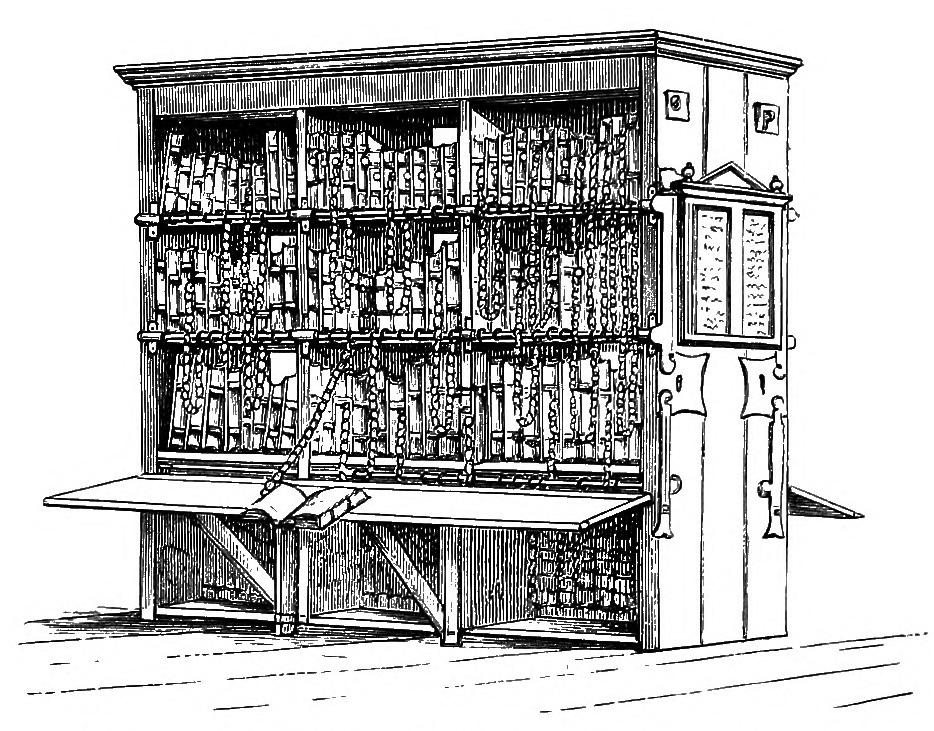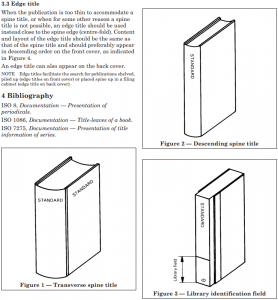Have you noticed how the titles printed on the spines of your books are all, for the most part, oriented the same way? That’s not a coincidence.

ISO 6357 defines the standard positioning of titles on the spines of printed books (it’s also codified as British Standard BS6738). If you assume that your book is stood “upright”, the question is one of which way you tilt your head to read the title printed on the spine. If you tilt your head to the right, that’s a descending title (as you read left-to-right, your gaze moves down, towards the surface on which the book stands). If you tilt your head to the left, that’s an ascending title. If you don’t need to tilt your head in either direction, that’s a transverse title.

The standard goes on to dictate that descending titles are to be favoured: this places the title in a readable orientation when the book lays flat on a surface with the cover face-up. Grab the nearest book to you right now and you’ll probably find that it has a descending title.

But if the book is lying on a surface, I can usually read the cover of the book. Only if a book is in a stack am I unable to do so, and stacks are usually relatively short and so it’s easy enough to lift one or more books from the top to see what lies beneath. What really matters when considering the orientation of a spine title is, in my mind, how it appears when it’s shelved.
It feels to me like this standard’s got things backwards. If a shelf of anglophone books is organised into any kind of order (e.g. alphabetically) then it’ll usually be from left to right. If I’m reading the titles from left to right, and the spines are printed descending, then – from the perspective of my eyes – I’m reading from bottom to top: i.e. backwards!
It’s possible that this is one of those things that I overthink.